Explore Top 5 Historical Places To Visit In Chaukori In 2025

This serene and picturesque town, located amidst the Kumaon Himalayas, is more than a paradise for those who love nature; there is much in Chaukori for history buffs. Apart from awe-inspiring vistas, the island has more to offer: a glimpse of the history that once unfolded in this region. This beautiful hill station has magnificent temples, fascinating shrines in caves, and other well-preserved monuments that tell stories of earlier civilizations. That said, grab your walking shoes and your spirit of enquiry, and let’s take a history tour through the five best historical places to visit in Chaukori that you cannot afford to miss.
5 Places To Visit in Chaukori
Chaukori is the home to a wide range of historical places; some of the most prominent ones include the following:
1. Kapileshwar Mahadev Temple
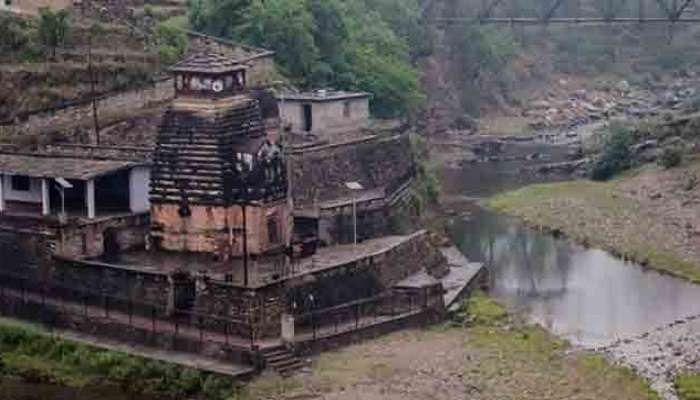
Panchavati Shiva Temple is an ancient cave temple located on the karst uplands. It was built sometime between the Christian era’s 10th and 12th centuries AD. It is fascinating to discern how a natural cave adorned with artistic carvings and sculptures along its walls provided a backdrop to the early history of religion in the area. Among the most significant terms, we can identify that the calm environment accompanied by the sound of water positively impacts the person; therefore, it is suitable for calming the mind.
Entry Fee: Free
Location: Situated in Saur Valley, nestled amidst the villages of Takura and Takari in the Pithoragarh district.
Must Read: Badrinath In October
2. Mahakali Temple
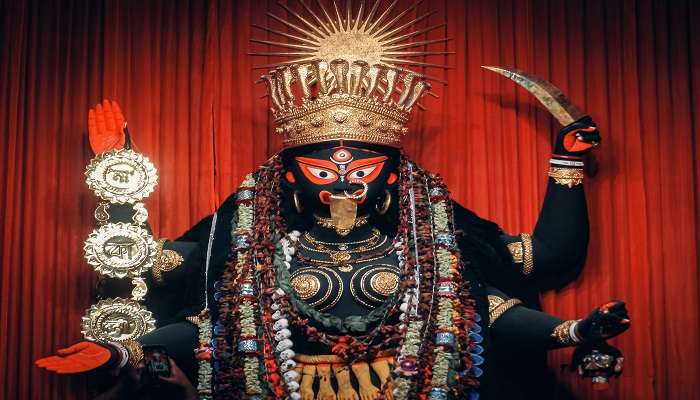
According to historical evidence, this beautiful temple is dedicated to the Goddess Kali and was constructed in the 8th century AD. The carving is also complex, with an eight-sided shikhara-shaped tower. The building is set within a forest environment, which adds to the magical feel. In the morning prayer ceremony, the artist presents a sense of the culture the people are blessed with in terms of practice and beliefs.
Entry Fee: ₹10 per person
Location: Gangolihat is a small town about 20 km from Chaukori,enclosed by thick Deodar forests.
3. Nag Mandir
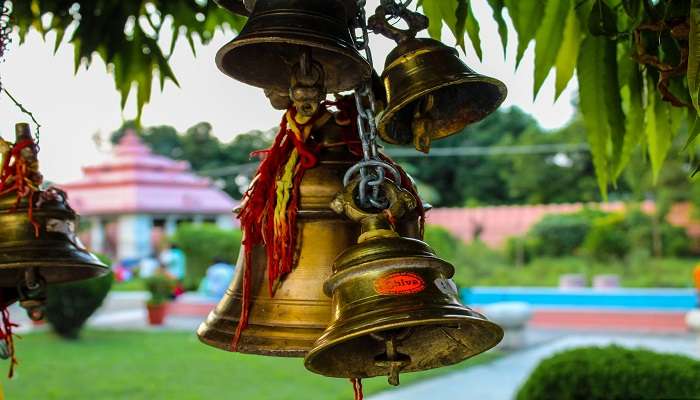
This temple, a sanctum for the serpent god (Nag), is widely regarded as having been constructed during the Katyuri dynasty. Speaking of construction, the most remarkable architectural detail in the temple’s structure is the shikhara, which is a pyramid; additional notice should be taken of carvings illustrating serpents. It is almost always quiet, and the ambience of the place, coupled with the natural scenery of the surrounding region, makes it perfect for history enthusiasts and nature lovers. Unlike most shrines and temples, one does not have to pay any money to be allowed entry into this specific temple.
Entry Fee: Free
Location: Berinag, a mesmerising village approximately 12 km from Chaukori.
Suggested Read: Places To Visit In Bageshwar
4. Ghunsera Devi Temple
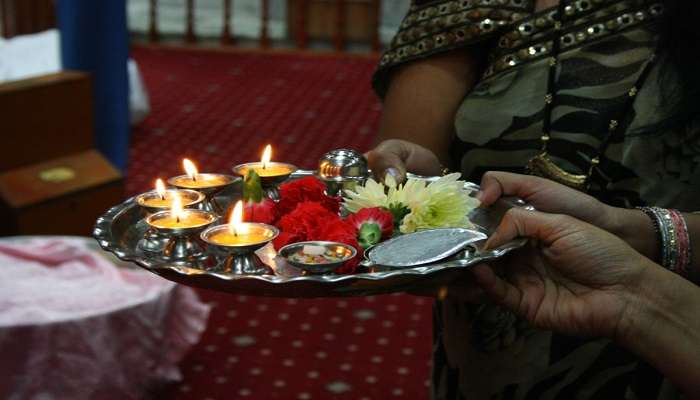
Local legends say this was one of the oldest temples in the Kumaon region, making it highly revered. The fact that it is a natural cave creates an atmosphere, and the myths associated with the deity increase the cultural value of the temple. Archaeological evidence of this temple’s precise year of construction is somewhat limited. However, the temple is situated at a very unusual site and occupies a special place in the nation’s religious life. Therefore, it will be interesting to visit it at any time. Visiting this temple does not incur any cost as there is no charge to be paid to the management to allow one to access the temple.
Entry Fee: Free
Location: Situated near a natural cave, offering a mystical ambience, this temple is dedicated to Goddess Ghunsera.
5. Patal Bhuvaneshwar
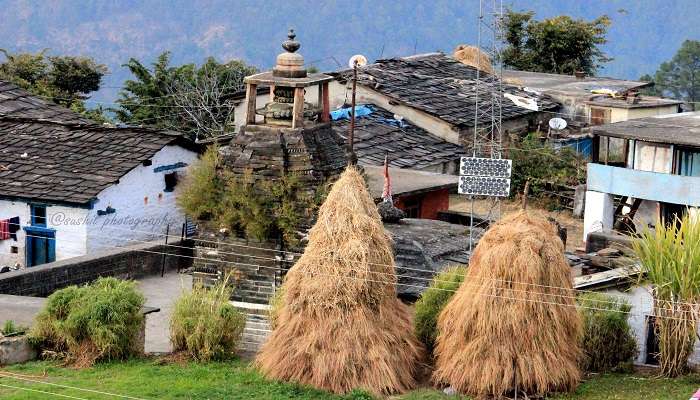
After crossing the caves’ entrance, one can witness a series of interconnected caves, and every single cave is decorated with what seems to be the representation of Shiva lingam and beautiful carvings. It is believed that the construction of these cave temples took place in the 8th-12th centuries AD, but this is a unique chance to explore the history and traditions of this area.
Entry Fee: ₹15 per person
Location: Situated approximately 8 km from Chaukori, Patal Bhuvaneshwar is a group of 16 fascinating cave temples dedicated to Lord Shiva.
Suggested Read: Hotels In Guptakashi
Beyond The Temples: Unveiling Chaukori’s Rich Tapestry
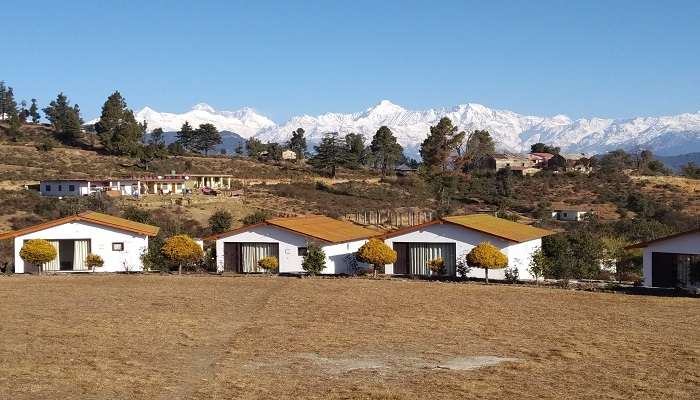
While these historical sites offer a glimpse into Chaukori’s past, you can also explore the local museums and interact with the Kumaoni people.
Visit the Tribal Museum in Chaukori: This small museum is freely accessible and displays art and different items related to the tribal history of the Kumaon region. It is a good place for tourists to experience and learn about the cultural practices, dress codes, and other activities of native/Indigenous inhabitants, such as tribes.
Interact with Local Craftsmen: Tourism is also well developed here because the talented local craftsmen dazzle to make fantastic hand-crafted items for people to carry back home. Talk to them to learn how previous generations helped develop such techniques and admire the wonderful work done there.
Further Read: Hotels Near Ram Jhula
Chaukori is not just another beautiful hill station rich in natural beauty; it also has the feel of nature, culture, and history. Visited all the historical sites mentioned above, and each comes with a rich history that will enlighten anyone with knowledge of the area and its history. Temples date back to several eras, and cave shrines speak volumes about its history, along with beautiful sceneries throughout the destination, and that just makes Chaukori so unique for all history lovers. Come plot your trip to embark on historical places to visit in Chaukori. Plan your trip to Uttarakhand for a beautiful experience.
For our editorial codes of conduct and copyright disclaimer, please click here.
Cover Image Credit: Shubhachemu for Wikimedia Commons
Frequently Asked Questions About Places To Visit In Chaukori
What is the best time to visit the historical places in Chaukori?
The historical sites learners wish to visit will typically not be accessible during the winter or summer due to unfavourable weather. Still, Autumn and Spring are the best times to plan your historical tour. Though most places can still be visited throughout the year, the snow may cover some of these areas during winter, especially in December, January, and February.
Do I need to wear specific clothing to visit temples in Chaukori?
Additionally, there isn’t any specific dress code; however, wearing clothes that would not expose the abdomen, upper arms, shoulders or knees is considered appropriate.
Are cameras allowed at historical sites in Chaukori?
Photography is generally allowed in almost all historical sites in Chaukori, provided that the visitors use the appropriate equipment. However, it is prudent to ask locally whether photography is prohibited inside the temples or in certain regions.
Is it appropriate to offer donations at historical sites?
Of course, there can always be places like historical sites or temples with boxes where these individuals can drop their donations. Even if it is very little, people should give money to show their concern for maintenance and conservation.
Are there any guided tours available for the historical sites?
It is recommended that a local guide be used, although guided tours for specific historical places can be limited, acquaintance with the country's history will certainly be more helpful.
People Also Read:
Places To Visit In Halebidu Places To Visit In Ramgarh Uttarakhand Places To Visit In Mumbai

Unveil the hidden treasures of the globe and turn every travel dream into reality. As a Content Writer, I am passionate enough to craft stories from ancient wonders to modern marvels. My words paint the picture-perfect itinerary for unforgettable experiences. Let my words be your trusted guide to immerse in the diverse culture and discover the beauty of the unknown.











